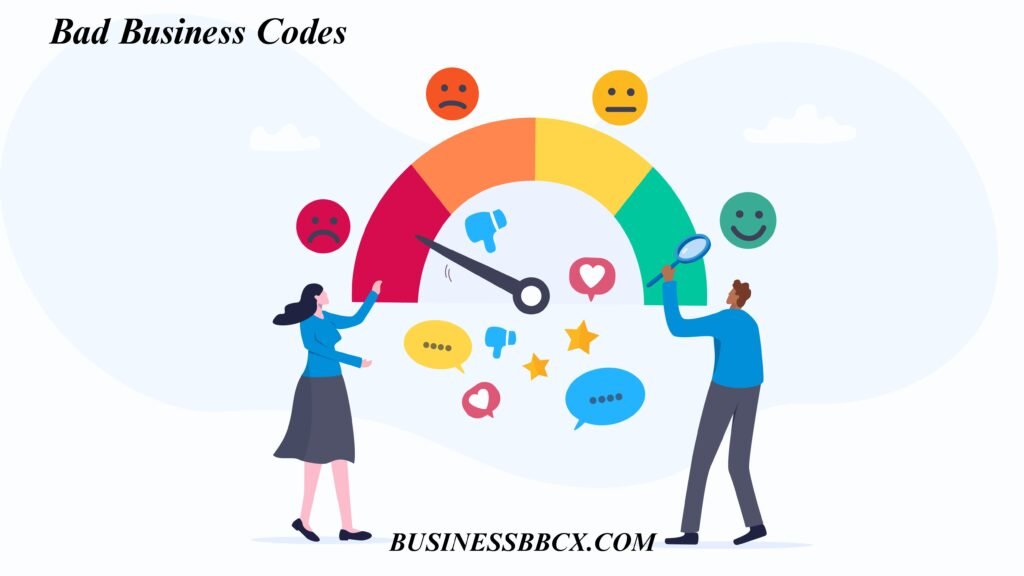In the fast-paced business world, success often hinges on efficiency, clarity, and adaptability. Yet, lurking beneath the surface of many organisations are bad business codes—unwritten, outdated, or poorly defined practices and policies that stifle innovation and impede progress. These bad codes aren’t just annoyances; they can cripple growth, demoralize employees, and erode customer trust.
Table of Contents
ToggleWhat Are Bad Business Codes?

Bad business codes refer to inefficient or harmful practices, policies, or cultural norms within a company. These can manifest in various forms, including:
Outdated Policies: Rules that no longer align with industry standards or technological advancements.
Opaque Processes: Lack of transparency in decision-making or unclear workflows.
Toxic Work Cultures: Unchecked favoritism, excessive micromanagement, or lack of accountability.
Redundant Bureaucracy: Layers of unnecessary approvals that slow down operations.
Misaligned Incentives: Rewarding behaviors that conflict with the company’s stated goals, such as prioritizing short-term gains over long-term sustainability.
Symptoms of Bad Business Codes
Identifying bad business codes can be challenging because they often become ingrained in an organization’s DNA. However, there are telltale signs:
High Employee Turnover: Talented individuals leave because they feel undervalued, overworked, or stifled.
Customer Complaints: Persistent issues in service delivery or product quality often stem from systemic inefficiencies.
Missed Deadlines: Projects regularly fall behind schedule due to unclear objectives or excessive red tape.
Lack of Innovation: Employees hesitate to propose new ideas due to fear of failure or lack of support.
Low Morale: A disengaged workforce is often the result of poor communication and lack of recognition.
Real-World Examples
Kodak’s Decline: Despite pioneering digital photography, Kodak’s adherence to outdated business models and reluctance to embrace change led to its downfall.
Blockbuster’s Fall: A failure to adapt to new customer preferences and technological shifts allowed Netflix to dominate the market.
Wells Fargo Scandal: Misaligned incentives encouraged employees to open unauthorized accounts, damaging customer trust and brand reputation.
Why Do Bad Codes Persist?
Bad business codes often endure due to:
Complacency: “We’ve always done it this way” becomes a dangerous mantra.
Fear of Change: Uncertainty about the outcomes of new approaches leads to resistance.
Lack of Awareness: Leadership may be disconnected from the day-to-day challenges faced by employees and customers.
How to Avoid the Trap of Bad Business Codes

Prioritize Ethics
Adopt a transparent and ethical approach to business. Establish a strong code of ethics and ensure every team member understands and practices it.
Involve Stakeholders
Engage employees, customers, and investors in shaping business policies. Their input ensures the codes are practical and well-aligned with expectations.
Embrace Change
The business world evolves rapidly. Stay informed about industry trends and be willing to pivot strategies as needed.
Conduct Regular Reviews
Audit your business codes periodically to identify areas of improvement. Make revisions that align with current goals, technology, and market demands.
Invest in Training
Train employees to adhere to and internalize the business codes. Well-informed employees are more likely to act responsibly and efficiently.
Breaking the Cycle

To eradicate bad business codes, organizations must take a proactive approach:
Audit and Assess: Regularly evaluate policies, workflows, and cultural norms. Solicit feedback from employees and customers to identify pain points.
Embrace Transparency: Ensure that decision-making processes and expectations are clear at all levels.
Empower Employees: Encourage innovation and reward problem-solving. Create a culture where mistakes are seen as opportunities for growth.
Streamline Processes: Eliminate unnecessary layers of approval and automate repetitive tasks where possible.
Lead by Example: Leadership should embody the values and behaviors they want to see in their teams.
Conclusion
Bad business codes are more than just inefficiencies; they are barriers to growth and success. Addressing them requires courage, adaptability, and a commitment to continuous improvement. By identifying and eliminating these harmful practices, businesses can foster a healthier work environment, delight their customers, and position themselves for long-term success.
FAQs About Bad Business Codes
What are bad business codes?
Bad business codes refer to unethical, unclear, outdated, or inefficient principles, policies, or practices that guide a business. These can lead to operational inefficiencies, legal issues, and loss of trust among employees, customers, and stakeholders.
How do bad business codes affect employee morale?
Ambiguous or unfair business codes create confusion and dissatisfaction among employees. When workers don’t feel valued or understand their roles, it leads to frustration, reduced productivity, and higher turnover rates.
Can bad business codes lead to legal problems?
Yes, unethical business codes, such as misleading customers or violating regulations, can result in lawsuits, fines, and other legal penalties. These legal issues can also harm the company’s reputation and financial stability.
What are some real-world examples of bad business codes?
Examples include:
- Volkswagen’s emissions scandal, where unethical practices led to legal and reputational damage.
- Blockbuster’s refusal to adapt, which showcased resistance to change in the face of industry evolution.
- Enron’s fraudulent accounting practices, which led to one of the largest corporate collapses in history.
How can businesses identify bad business codes?
Businesses can identify bad codes by:
- Conducting regular audits of policies and procedures.
- Seeking feedback from employees and stakeholders.
- Monitoring compliance with ethical and legal standards.
- Evaluating business outcomes and customer satisfaction metrics.
What steps can businesses take to correct bad business codes?
To correct bad business codes:
- Establish and enforce a strong code of ethics.
- Regularly update policies to reflect current market trends and regulations.
- Train employees on ethical and operational best practices.
- Encourage transparency and open communication across all levels of the organization.


